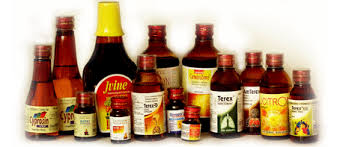Give three forms of comparison of the following adjectives.
| big | ||
| clever | ||
| good | ||
| pleasant | ||
| poor | ||
| bad | ||
| funny | ||
| important | ||
| sunny | ||
| little | ||
| comfortable | ||
| good |
Make the sentences from the following words and translate them.
1.most – the Mona Lisa – in – is – painting – the – famous – the – world.
____________________________________________________________________________________________________________________________________________________________
2. longer – the Don – is – the Volga – than.
____________________________________________________________________________________________________________________________________________________________
3. more – Spain – Germany – than – beautiful - is.
____________________________________________________________________________________________________________________________________________________________
4. London – city – in – biggest – the – England – is.
____________________________________________________________________________________________________________________________________________________________
5. the – team – Adam – is - worst – the – player – in.
____________________________________________________________________________________________________________________________________________________________
WORDS AND EXPRESSIONS
| aerosol (n) | ||
| BCG vaccine | вакцина БЦЖ | |
| by gravity | самотеком | |
| convenient (adj) | ||
| deplete (v) | ||
| dermal application | путем нанесения на кожу, накожно | |
| drip set | капельница | |
| emergency (n) | ||
| for any reason | по какой-либо причине | |
| graduated bottle | флакон с делениями | |
| infusion (n) | вливание | |
| instead of | ||
| intradermal (adj) | ||
| intramuscular (adj) | ||
| intravenous (adj) | ||
| irritant (adj) | ||
| loose (adj) | рыхлый | |
| necrosis (n) | ||
| needle (n) | ||
| nitroglycerin (n) | ||
| penetrate (v) | ||
| permeable (adj) | ||
| permit (v) | ||
| potent (adj) | ||
| preferable (adj) | ||
| quick on the uptake | быстро поглощать | |
| rapidity (n) | ||
| rate (n) | ||
| retain (v) | ||
| route of administration | метод назначения | |
| subcutaneous (adj) | ||
| sublingually (adv) | ||
| syringe (n) | ||
| tolerate (v) | ||
| topically (adv) | ||
| vascularised (pp) | снабженный кровеносными сосудами | |
| volatile (adj) | летучий | |
| vomiting (n) |
INDEPENDENT STUDENTS’ WORK
LIQUID DOSAGE FORMS
In this unit:
· speaking on drug dosage forms
· discussing types and properties
of liquid dosage form
READING
1. What do we call a drug dosage form in other words?
2. What is needed for protection of drug from various harmful factors?
3. What types of liquid dosage forms do you know?
LIQUID DOSAGE FORMS

A drug is defined as a substance used for diagnosis, prevention and treatment of disease. A dosage form of a drug is a product suited for administrationto the patient by various routes. Suitable dosage forms are needed for protection of the drug from destructive influences of atmospheric oxygen or moisture, from gastric acid on oral administration, to mask bitter taste and bad odor, to provide extended drug action, through controlled release mechanism, etc. Following agents are used with drug for suitable dosage form:
- Vehicles. These are used to dissolve or suspend drugs. They are also used to mask bad taste of drug.
- Coloring Agents. These are harmless substances used for coloring drugs to make them more acceptable for patients.
- Sweetening Agents. Solid sweetening agents as sucrose and cane sugar are usually used for syrups and elixirs. Saccharine, about 500 times sweeter than sugar, is non caloric and may be used by diabetics and obese patients to restrict their carbohydrate intake. But there is a suspicion that saccharine is carcinogenic.
- Flavoring Agents. “Flavor” refers to a mixed sensation of taste, touch, smell, sight and sound. The four primary tastes are sweet, sour, bitter, and saline. Proper selection of flavor has to be made to mask nauseating medicines of bitter sour, saline, and oily tastes.
Liquid Dosage Forms.
Aqueous solutions contain one or more drugs dissolved in water. There are two categories: solutions for oral use and solutions for injections, which are sterile liquids or suspensions, packed in suitable containers. The aqueous vehicles mostly used for preparing injections are water for injection and sodium chloridesolution. Injections are available in sealed glass ampoules or vials. Aqueous suspensions contain one or more chemical substances dispersed in water by means of harmlesssuspending agents. These are preparations of fine and undissolved drugs dispersed in liquids. Suspensions for oral use are:
- Emulsions: suspension of fats or oils in water with aid of emulsifying agents. The oil particles are coated with emulsifying agent so that they do not coalesce as the surface tension between the oil and water is lowered. Thus, a stable suspension is produced.
- Gels are colloidal suspensions of aqueous inorganic substances.
- Magmas are bulky suspensions of substances poorly soluble in water. They are also called milks as they are white in color. Magmas and gels are similar except for the particles suspended in magma are larger. Thus, magmas tend to separate on standing and require a “shake well before use” on a label.
- Mixtures are preparations where drug or drugs are in solution or suspension meant for oral administration. Spirits or essences are concentrated alcoholic solutions of volatile substances. Dissolved substance may be solid, liquid, or gaseous. Most spirits contain 5-20% of the active material. Spirits containing volatile oils are prepared by diluting 10 volumes of oil with 90 volumes of alcohol, and coloring material may also be added. Many spirits are used as flavoring agents. Extractive preparations are made from medicinal plants and contain the active substances in the aqueous-alcoholic solvent. Tinctures are alcoholic or aqueous-alcoholic preparations made of medicinal plants.
VOCABULARY PRACTICE
